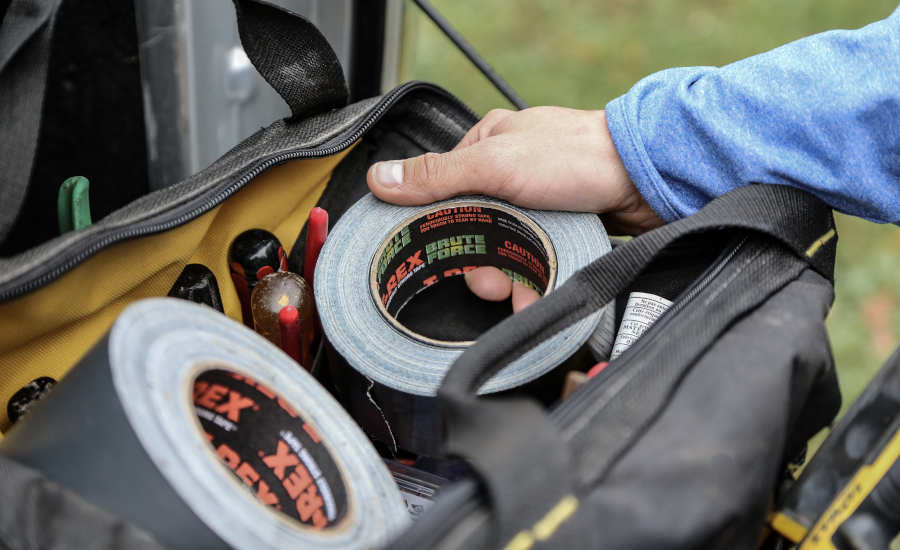Contractors in restoration and remediation work are always looking for ways to improve safety and be more efficient on the job. Whether it’s a new tool that helps you move faster in small ways or an old tool that provides a temporary safety solution while you work, anything you can do to save time, prevent property damage and avoid on-the-job injuries means saving money and upholding a trustworthy business reputation.
One of the best tools to help you work smarter is also one of the least expensive: TAPE. Specialty tapes and professional grade duct tapes are versatile tools that provide barriers, time-saving efficiencies and on-the-fly repairs when you need them most. Here are a few examples of how tape can make your work easier and safer.
1. Mark Your Work Area
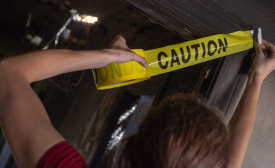
Before any demolition or restoration work even begins, safety is the first priority—for your crew and for the inhabitants of the home or business in which your working. Using non-adhesive barricade tape to mark your work areas will indicate where it’s safe (or unsafe) to move around. For restoration and remediation applications, barricade tape comes in four main prints: caution, danger, wet paint and lead hazard. If lead paint or asbestos are present in the demo work, the stakes are even higher. So, it’s critical to alert everyone about the risks.
2. Prep the Jobsite
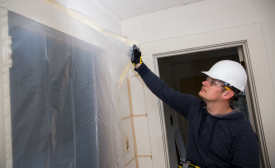
Double-sided containment tape is an essential tool for containing debris and protecting surfaces around the jobsite during restoration, abatement, rebuilding and cleaning. The two-tapes-in-one design allows you to quickly and effectively build containment areas for tasks like sawing studs, cutting drywall, sanding joint compound and painting. It becomes especially important if you’re also running industrial-grade fans to ventilate a space with smoke damage or dry out a space after a flood. One side of the tape features a premium grade painter's tape adhesive, while the opposite side offers a more aggressive adhesive that secures poly-sheeting, tarps or other protective coverings. And when your job is finished, you can simply remove the tape and covering in one easy step.
3. Mask Rough Surfaces
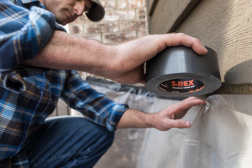
For rough surfaces like brick, stone, concrete and wood, standard painter’s tapes often aren’t enough. You need a tape with a more aggressive adhesive to effectively stick to those coarse, irregular surfaces. Turn to a heavy-duty duct tape with an adhesion strong enough to hold tarps, plastic and poly-sheeting on rough and dirty surfaces and protect your client’s home or business. But be sure to exercise some caution when using these tapes—the adhesive can be so aggressive that if not removed carefully, or if left on too long, they can damage some surfaces. And as a bonus, a heavy duty duct tape can also save the day if a bucket cracks or a wet/dry vacuum hose is punctured.
4. Replace a Rope or Chain


The restoration process often entails bundling waste materials and moving furniture or large, heavy appliances out of and back into spaces to make room for repairs. Rope, ratchet straps and chain are viable tools for securing those loads to a hand truck or platform truck. But they’re cumbersome, can take up a lot of space in a work vehicle and can be a pain to cut or adjust to a precise length. Instead of fighting with unruly loops of rope or chain, just pack a roll of high-performance, extreme-tensile cloth duct tape. This unique, heavy-duty product is a structural grade duct tape that is in a class of its own, with the ability to hold 700-plus pounds of weight with a single 36-inch loop. It’s a perfect solution for holding stacks of wood and debris together or securing heavy loads for short transport without the need for large piles of rope or heavy chains.
5. Get a Grip
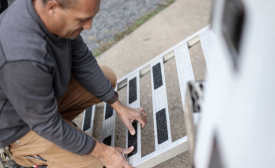
You work in all kinds of conditions. And when work van step-ups truck runner boards or temporary work platforms become wet, it can be a dangerous situation. Use a product like a non-slip tread tape that has gone through a multi-layer grit-embedding process to add extra traction around the jobsite. It will keep you and your crew safer by reducing the risk of slips and falls (and eliminates project setbacks in the process). Use an industrial-quality grip tape that’s easy-to-apply, meets and exceeds OSHA and ADA federal recommendations and is UV and weather-resistant to ensure a long-lasting hold.
6. Save a Cracked Screen
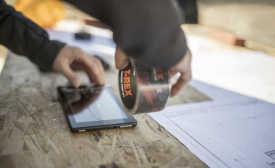
Jobsites are active environments where tools are prone to damage from drops and dings. One of your most valuable tools isn’t used in the hands-on aspects of restoration or remodeling but is still highly susceptible to breaking on the job: your phone. You use your phone for everything from scheduling and communicating with the home office to capturing photos of damage and entering claim information for insurance companies. And because you’re constantly on the move, sometimes in cramped spaces, dropped phones and cracked screens are the reality of the environment. When the inevitable happens, you can use clear repair tape for a long-holding, crystal clear temporary fix that still allows the touchscreen to function.
Whether it’s containing dust particles, masking concrete block walls or patching a hole in a wet/dry vacuum, the right tapes can help you work safer, speed up your processes and prevent downtime if something breaks. So it pays to keep them in your truck.
